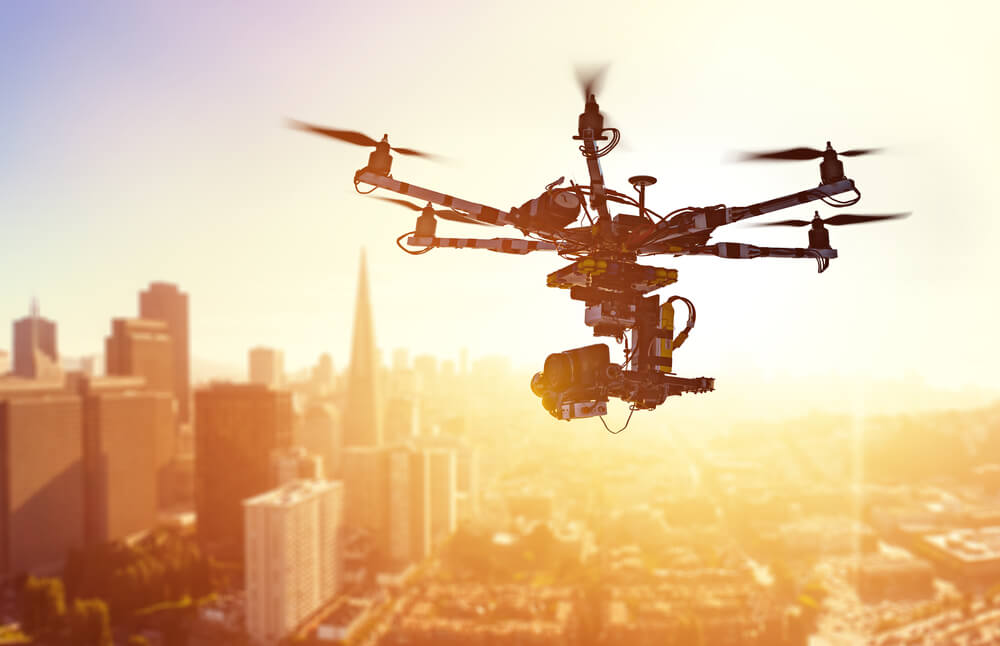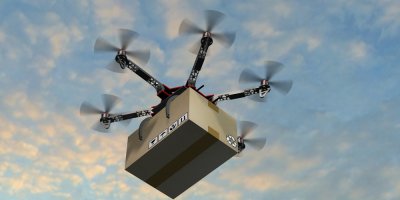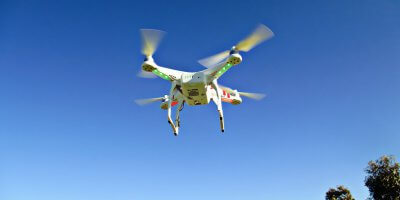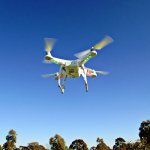
How are drones helping to restore China’s Great Wall? Source: Shutterstock
Drones are helping restore China’s crumbling Great Wall
THE applications of drone technology seem to be growing at an unprecedented rate. From uses in logistics, agriculture, and disaster relief to even being used to deliver pizzas; many industries are leveraging the advanced technology in many weird and wonderful ways.
A recent deployment of the remote-controlled flying machines is in the conservation of China’s Great Wall. The China Foundation for Cultural Heritage Conservation and Intel announced a partnership last week to use the US semiconductor giant’s drone and artificial intelligence (AI) technology to help repair the crumbling Great Wall.
The advanced technology will help scout a remote and severely weathered section of the Great Wall, which was constructed during the Ming dynasty which spanned the 14th to 17th centuries.
“Using drones, we are able to inspect multiple aspects of the structure including areas that are quite inaccessible. We continue to be excited about the future of inspections being automated all the way from drone data capture to data processing, analysis and insights.”
“We look forward to leveraging our technology to aid in the preservation of more world heritage sites in the future,” said Anil Nanduri, vice president and general manager of Intel’s drone team, in a statement.
Why are drones needed?

Drone technology is increasingly being used by many industries. Source: Shutterstock
The Jiankou section of The Great Wall is among its most famous but steepest stretches. This section dates to the third century B.C., and is located in thick vegetation, and as such, has naturally weathered.
Intel’s AI and Falcon 8+ drone technologies will be used to inspect and map the Jiankou section which has been a challenging spot for the repair teams to reach.
“As one of the Seven Wonders of the World, the Great Wall has been exposed to weather erosion for thousands of years,” explains Li Xiaojie, China Foundation for Cultural Heritage Conservation chairman, in a recent statement.
“Some parts are on steep inclines, which pose a great challenge for daily maintenance. Our partnership with Intel has opened new avenues for preservation,” he added.
Over the next couple of months, Intel’s drones will capture aerial photography of the World Heritage Site to obtain high-definition 3-D images, facilitating teams in understanding its current condition.
Moreover, Intel’s AI data capture will create a visual representation of the Great Wall to help efficiently and safely identify which sections are in need of restoration.
China: a hotbed for drone innovations
The applications of unmanned aerial vehicles in China are growing at break-neck speed, with the country becoming a leader in drone innovation.
DJI, a Shenzhen-based start-up founded in 2006 has become the world’s largest maker of recreational drones. With a global market share of an estimated 70 percent, its drones are being utilized by businesses and militaries around the globe.
“The evolution of drones has gotten to the point where they are dependable, the image quality is terrific, and the body of pilots is growing significantly.” – Phil Pastuhov, Aerial DP
— DJI (@DJIGlobal) April 10, 2018
China’s e-commerce industry is also realizing the business opportunities of drone technology. Rivals JD.com and Alibaba both launched drone delivery services last year at several locations in mainland China.
This tech trend has also been growing in popularity among Chinese farmers. Many farmworkers are employing drones to make up for a rising labor shortage, while achieving impressive increases in productivity in the process, reports the South China Morning Post.
According to recent government estimates, the market for agricultural drones on mainland China could reach US$15.8 billion per year.
READ MORE
- Ethical AI: The renewed importance of safeguarding data and customer privacy in Generative AI applications
- How Japan balances AI-driven opportunities with cybersecurity needs
- Deploying SASE: Benchmarking your approach
- Insurance everywhere all at once: the digital transformation of the APAC insurance industry
- Google parent Alphabet eyes HubSpot: A potential acquisition shaping the future of CRM




